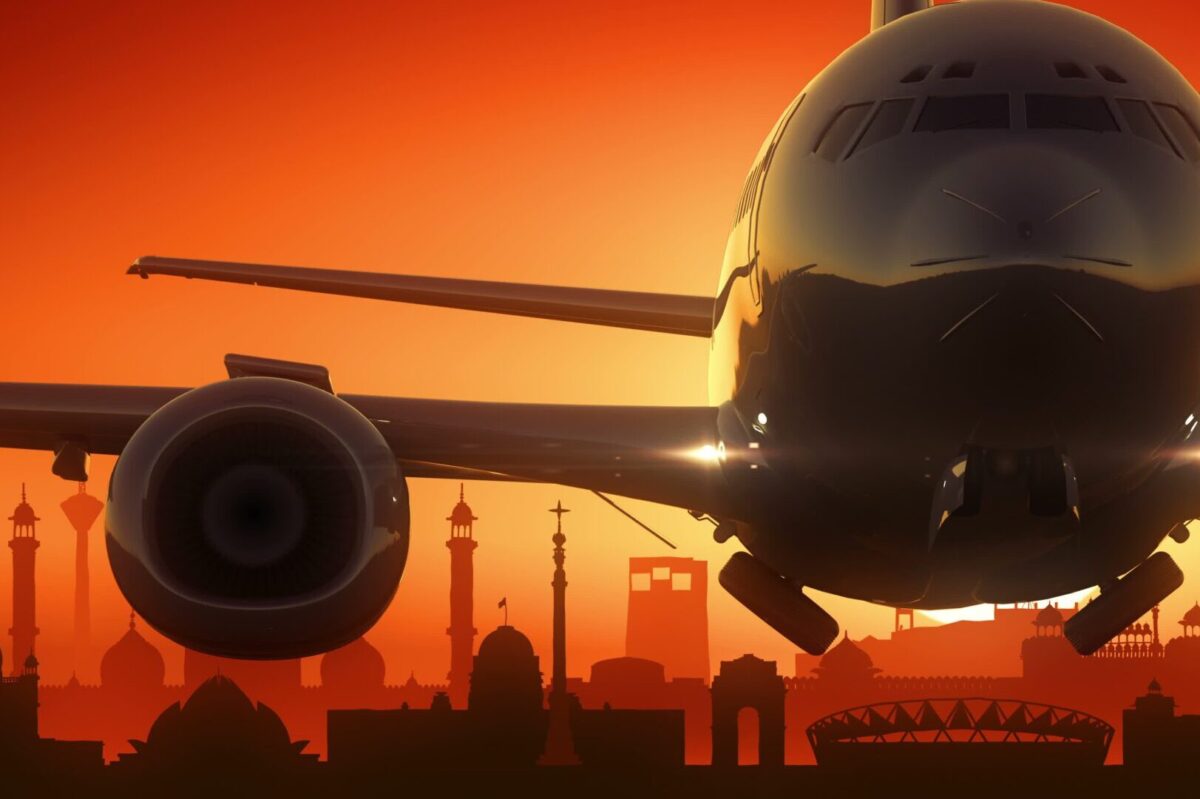Skift Take
Though ambitious, CAPA's forecast for the Indian aviation sector is not totally outrageous. A new aviation policy may just be what the country needs.
India is on the cusp of an aviation boom as many call the country the “most promising aviation market” globally post-Covid.
With Indian aviation projected to see strong and sustained expansion, aviation consultancy and research firm CAPA India expects the country might need to have the capacity to handle more than 1.3 billion passengers, requiring a commercial fleet of nearly 4,000 aircraft, within two decades.
Outlining a roadmap for a new civil aviation policy, CAPA India said the policy should deliver airline viability and growth by design.
In 2016, India drafted the National Civil Aviation Policy to establish a conducive environment that makes air travel affordable to a larger population.
The policy had set targets to achieve 300 million domestic ticket sales by 2022 and 500 million by 2027, along with an increase in international ticket sales to 200 million by 2027.
In financial year 2023, India’s aviation system handled just fewer than 200 million airline passengers, while 12.9 million passengers took to the skies in India in March, according to aviation watchdog Directorate General of Civil Aviation. The country’s commercial aviation industry supports around 700 aircraft.
In the first quarter of 2023, around 37.5 million people took domestic flights, making it the best first quarter ever for Indian aviation.
Best First Quarter Ever
India’s aviation sector has been among the fastest growing in the world, with Airports Council International’s long-term forecast indicating that by 2041 India is expected to grow by 339 percent over 2022, reaching 1.1 billion passengers flown.
According to the International Air Transport Association, India is expected to be the third-largest aviation market in the world by 2025, after China and the U.S.
Consistent with the country’s aspirations to be an aviation powerhouse, CAPA India called for a new policy for the sector to achieve its true long-term potential.
“Designed to support a transformational vision for what Indian aviation can aspire to be in 20 years from now, CAPA India has outlined a roadmap for the formulation of a new civil aviation policy,” the firm said.
“This is an unconstrained forecast, but it would represent a market around 20 percent larger than the U.S. was prior to Covid,” CAPA said.
If that projection is realized, the traffic handled by Indian airports would have grown from the size of Las Vegas airport to the size of the entire U.S. within less than 40 years, according to CAPA India.
Even under a more conservative, linear growth scenario, CAPA predicted that India would likely reach a market size similar to China pre-Covid.
$1 Trillion Contribution
CAPA India further predicts that if the ramp-up in scale is achieved by financial year 2043, aviation could make a $1 trillion annual contribution to the Indian economy, taking into account direct, indirect, induced and catalytic impacts.
To provide a level playing field for carrier CAPA proposed dismantling the negative fiscal regime and infrastructure provided ahead of time.
“System efficiency must be maximised to enable the emergence of mega-carriers,” the aviation research firm said.
Aviation fuel in India attracts the highest levels of taxes in the world. Airlines have been requesting the government to bring the fuel under the new tax regime of good and services tax (GST). The government hasn’t done that yet.
“High fuel cost, plus the depreciation of the Indian rupee has had a significant impact on cost,” Vistara CEO Vinod Kannan said to Skift earlier while speaking about how the airline’s strong revenue performance had been affected by high costs.
Citing the need for a mega-airport along the lines of Istanbul airport or Dubai World Central with capacity for up to 200 million passengers, CAPA recommended the aviation policy should plan for airport capacity where major cities like Delhi and Mumbai would need to start planning for third airports.
Restructuring of Airspace Design
CAPA also called for restructuring of airspace design to provide capacity for up to 8–10 times of current traffic taking into account continued growth in overflights, general aviation and new-age aviation, like air taxis and electric vertical take-off and landing aircraft.
Indian plans to develop 50 new tourism destinations across the country and envisages making 59 new air routes operational to boost tourism in the country, Arvind Singh, tourism secretary said on Sunday.
Currently, there are around 700 commercial aircraft in India with the aviation sector all set for growth as domestic carriers have ordered over 1,100 planes.
The erstwhile national carrier Air India, now owned by Tata Group, placed an order for 470 planes with Airbus and Boeing worth $34 billion, marking the first such order in over 17 years.
The comprehensive order, including both wide-body and narrow-body aircraft, is the biggest ever made by an Indian carrier and is also among the largest single aircraft orders globally.
IndiGo, the biggest airline in India, has approximately 500 planes in its order, while the newbie airline Akasa Air has placed an order for 72 Boeing narrow-body aircraft, with 16 planes already delivered.
Go First, previously known as Go Air, has 72 planes on order, and Vistara is awaiting delivery of 17 additional Boeing planes.
Skift India Report
The Skift India Report is your go-to newsletter for all news related to travel, tourism, airlines, and hospitality in India.
Have a confidential tip for Skift? Get in touch
Tags: air india, airbus, akasa air, asia monthly, aviation, Boeing, capa, indian airlines, indigo, skift india report, Tata Group, vistara
Photo credit: By 2041 India is expected to grow by 339 percent over 2022, reaching 1.1 billion passengers flown. Source: Getty Images Ankabala / Getty Images
